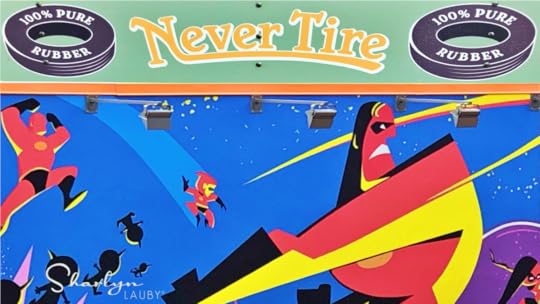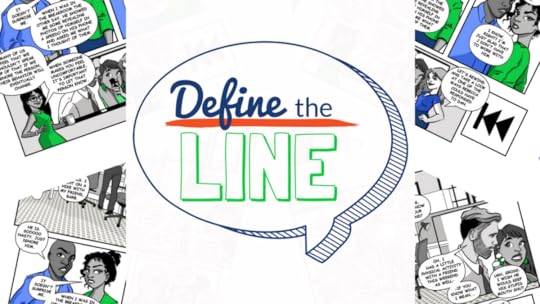Sharlyn J. Lauby's Blog, page 98
May 21, 2019
Career Development: 5 Activities that Should Be in Every Program
(Editor’s Note: Today’s post is brought to you by our friends at Criteria Corp, a leading provider of pre-employment testing services. If you want to learn more about how pre-employment testing can benefit your recruiting strategy, check out Criteria Corp’s “Definitive Guide to Pre-Employment Testing”. I found this to be a comprehensive guide that I keep on the corner of my desk all the time. Enjoy the article!)
I don’t have to remind anyone that recruiting is a challenge right now. The unemployment rate has fallen to 3.6%, the lowest it’s been since December 1969. I also don’t have to tell you that, at some point, all of the Boomers in your workforce are really going to retire. According to Pew Research Center, 10,000 people a day turn of retirement age. That number is expected to continue for the next decade. And while turning retirement age doesn’t mean that people will immediately retire, it does mean that at some point in the not too distant future, they will.
What is interesting to me is that, with all the conversation about low unemployment, skills gaps, phased retirement strategies, etc. that more organizations aren’t focused on career development. I mean the future workforce must come from somewhere. I don’t mean this is to be flip commentary, but an organization’s future workforce isn’t going to miraculous appear out of nowhere.
This means organizations need to step up their learning and development game. It doesn’t matter whether the organization decides to build an internal learning department or enter into a strategic partnership with a learning organization – like a college or university. What matters is that organizations have some sort of career development program in place.
5 Activities that Every Career Development Program Should Have
It’s easy to say, “Put in a career development program.” Reality is, it’s hard figuring out what activities to include and where to include them. Here are five things to consider when designing your career development program:
Goals. Think about this two-fold. First, all programs need goals. In the case of career development, the program needs organizational goals. Determine what the program goals will be and make sure everyone is onboard with those goals. Second, career development is often about setting goals. It could make sense to build a module that teaches employees how to set their career goals.
Assessments. There are many types of assessments on the market. Cognitive ability testing can provide the company and employees with a baseline for career development conversations. Organizations can administer cognitive ability assessments during the hiring process to understand the candidate’s trainability. Then use that information when the candidate is hired for their career development.
Training and Development. I like to draw a distinction between training and development. Training is for the jobs that employees hold today. Development is for the jobs that employees will have in the future. To me, career development is about both. Career development programs should include both the technical skills and soft skills employees need to be successful today as well as in the future.
Variety of Learning Methods. Today’s career development opportunities are awesome because organizations can provide them in a variety of formats: conferences, webinars, blogs, podcasts, microlearning, etc. You get the point. Each of these formats has pros and cons in terms of scalability, cost, development time, technology requirements, etc. Companies can put together development that works well for them and the employee.
Feedback Mechanisms. An employee’s thoughts about their career can change or shift. The company’s view on the employee’s career can also shift. It’s important that those “shifts” are discussed. Regular feedback conversations between the manager and employee about career development should take place. It doesn’t need to happen in every discussion, but a one-on-one meeting would be a common time to check-in and make sure that the company and employee are on the same page.
These five activities can take place during many phases of the employee life cycle. For example, we talked about cognitive ability assessments being used during recruiting and training. Technical training often takes place during onboarding. And many organizations are using video or webinars for refresher training. Goal-setting, feedback, and soft skills development could happen during performance management.
Use Career Development to Meet Today’s Staffing Needs
It’s time for companies to get creative with their staffing plans. I’m not saying to end traditional recruiting as we know it. But thinking about an employee’s career development can help organizations meet both their current and future staffing needs.
If you want to learn more about using career development as a part of your hiring strategy, join me and the Criteria Corp team on Tuesday, June 4 at 10a Pacific / 1p Eastern for the webinar “Future-proof Your Workforce by Hiring for Trainability”. And if you can’t make it for the live session, go ahead and sign up anyway to get the recording. I look forward to seeing you then.
The post Career Development: 5 Activities that Should Be in Every Program appeared first on hr bartender.






May 19, 2019
New Phase In the Employee Lifecycle: Unretirement
Years ago, when I worked in the hotel industry, the company’s labor attorney would call once a year to ask a favor. He asked for lunch reservations in the hotel restaurant on New Year’s Day. Every year. Lunch reservations on New Year’s. Finally, I got up the nerve to ask him why he wanted the reservation. He explained that he and his wife would have a super long lunch on New Year’s to talk about the future. They discussed their life, jobs, etc.
I thought this was a great idea. So, when Mr. Bartender and I started ITM Group, we decided to have the same conversation. Now we did do things a little bit differently. Instead of lunch on New Year’s, we decided to call ours a strategic planning meeting. And we added a conversation about retirement.
As owners of a small business, we knew it was important for us to think about what we wanted our retirement to look like. And when we wanted to start retirement.
During these conversations, there was one thing that kept coming up – how much we liked blogging. We had no idea when we started HR Bartender ten years ago that the blog would have grown exponentially and that we would love writing, marketing, and interacting with a huge community of readers.
That’s how our new blog, Unretirement Project, was born. But in doing so, we realized that what we were really creating was a blog about having something to do instead of traditional retirement. Hence, the concept of unretirement was born.
Since we launched the blog, I’ve talked to many individuals who are thinking about the same things that we were in terms of their own unretirement. Employees who enjoy working and want to continue contributing, albeit on a reduced schedule. Individuals who would like to pursue their encore career. Employees thinking about going back to school and learning something new. Or individuals who have decided to become freelancers or consultants.
Organizations have a huge opportunity here. With unemployment at record lows, companies need to find ways to tap into the talents of individuals thinking about retirement and unretirement. In many organizations, retirement has become synonymous with resignation. You know, someone goes to their manager and says, “I’m planning to retire at the end of the month.” Organizations are left to scramble trying to capture a departing employee’s knowledge and find their replacement.
One of the reasons that we’re in the situation is because we haven’t thought of unretirement as part of the employee life cycle. When activities – like transfers and promotions – become part of the employee life cycle, we talk about them more often. We discuss them openly. And we plan for them. Companies can make unretirement part of the employee life cycle by considering these three strategies:
Recruiting: Remember all jobs are not necessarily full-time jobs. When work needs to be done, the organization needs to remember the “buy, build, borrow approach” and ask the question, “Is this a full-time job?” It’s possible that the organization could engage a part-time, on call, or freelancer to get the work done.
Benefits: Consider a benefits package for contingent employees. In many almost all organizations, benefits are for full-time employees and, if you’re not full-time, you have no benefits. As companies build a contingent workforce, they might want to consider offering some sort of benefits package for part-time employees – it could go a long way in recruiting and retention.
Training: Provide managers with the tools to engage contingent workers. The key to successfully working with an unretired workforce is treating them like they’re unretired. Managers still need to engage and train part-time employees and freelancers at the same levels of full-time staff. The company still expects high levels of performance from all workers.
Organizations cannot afford to let their talent simply “retire”, taking years of knowledge and experience with them. By encouraging employees to unretire for a few years, the organization could create a real win for themselves and for employees. But like all the other phases in the employee life cycle, it takes planning and open, honest conversations about the future.
Image captured by Sharlyn Lauby while exploring the streets of Disneyland in Anaheim, CA
The post New Phase In the Employee Lifecycle: Unretirement appeared first on hr bartender.






May 17, 2019
Bookmark This! Aligning Employee Needs With the Learning Process
As recruiting remains a challenge, many organizations are looking to talent development as a way to maintain their staffing needs. This means creating training programs that will provide employees with the skills they need for the jobs they have today and the ones they are being developed for in the future.
A fairly common instructional design tool is the ADDIE model. It was created back in the 1970s by Florida State University as part of a military training project. The acronym stands for assessment, design, development, implementation and evaluation.
In recent years, the ADDIE model has received some criticism that it’s not flexible enough for today’s modern learning environment. However, I contend that the individual steps in ADDIE are still very necessary. Is it possible that the model is fine, but we need to view each step in a modern context? I recently explored this idea in a series of posts over on the Saba Software blog and I wanted to share them with you over here as well.
The ADDIE Model: Don’t Conduct Assessments Without This. Assessments, as part of the instructional design process, serve several purposes. They help organizations understand what’s really happening and their options for creating a solution. But to get a solution that’s totally focused on the learner and the learner’s performance? Make sure to include feedback from the learner during this step in the process!
Good Learning Design Involves Alignment and Specificity. The design phase can be used during the creation of any type of learning, whether it’s a five-minute demonstration about how to open a bottle of wine during a restaurant pre-shift briefing or a three-day leadership boot camp. The goal is the same – create a specific learning objective that directly links to employee performance.
Using the ADDIE Model to Develop Learning That Sticks. The development of learning isn’t simply about telling a person or a group some information. It’s about conveying that information in a format that allows the person to intake the information and use it right away. The shorter the time between the learner receiving the information and then using it, the better the chances of learning (true learning) taking place. And employee performance improves.
Program Implementation Should Benefit the Audience and the Organization. When preparing to launch a new learning program, organizations must think about many things such as who will be the facilitator, what are the room logistics, etc. Those details are important, but don’t forget the audience. They’re the ones seeing the program. Organizations must put themselves in the shoes of the audience to create a first-class implementation.
Learner Feedback Is the Most Important Training Metric. When it’s time to evaluate learning, organizations need to make sure that the program objectives were accomplished. But, organizations should place equal value on employee feedback and comments. Their impressions of the program will be shared in the cafeteria, over Slack, and via text messages.
Let me add one more thing. Regardless of where the training occurs in the employee life cycle – orientation, refresher, or as a part of succession planning – organizations create training to move the needle on employee performance. If employees leave training loving the learning, their co-workers will want to know when they get to attend. If employees hate it, their co-workers will find excuses not to participate. That ultimately impacts the business metric the program is trying to change.
The model used to create learning programs should be learner-centric.
Image captured by Sharlyn Lauby during the Association for Talent Development International Conference and EXPO in San Diego, CA
The post Bookmark This! Aligning Employee Needs With the Learning Process appeared first on hr bartender.






May 14, 2019
Employee Referral Programs: Make Them More Effective with Goals
One of the most effective ways to source talent for your organization is through employee referral programs. Referrals often provide the best candidates at the lowest cost-per-hire. While an employee referral program shouldn’t be used exclusively as a recruiting source, it can be a very effective one.
Given how well employee referral programs can work for companies, do you have a goal for the program? And I don’t mean “get as many referrals as you can”. If you think about it, whenever we create programs, we have a goal for the program. It might be to hire XX candidates OR reduce recruiting costs by XX amount OR improve quality of hire by XX percent.
The reason I’m bringing this up is because I’ve had some conversations recently with talent acquisition professionals who talk about their employee referral programs differently. For example: “Thank You” bonuses. Some organizations thank employees with a referral bonus for saving them money and time sourcing candidates. Others don’t. They feel employees should want to refer the company to others, like it’s part of the job.
The company’s philosophy on referral bonuses should be part of the program’s goal. And it should be communicated to everyone. Because the company’s philosophy will drive future decisions about the program.
Just because we know what an employee referral program is, doesn’t mean the program shouldn’t have a goal or purpose. The last thing that organizations want is the program to lose its effectiveness. Here are a few suggestions of topics to discuss when it comes to employee referrals:
Is this an “employee” referral program or a “referral” program? Some organizations are opening up the program to former employees and customers.
Is a goal of the program to save money on recruiting costs? And if so, does it make sense to pay a bonus to individuals who save the company money?
Should a goal of the program include quality of hire? If that’s the case, how will the company measure quality?
Similar to quality of hire, should a program goal include length of employment? Meaning are referrals subject to candidates staying with the company longer?
You see where I’m going with this. I continue to hear how tough it is to find and keep talent. I also hear about how good employee referral programs are. Maybe it’s time to have some defined goals for the program, along with established ways to measure results. Not only will that keep this source effective, but maybe even improve it.
Image captured by Sharlyn Lauby while exploring the streets of Austin, TX
The post Employee Referral Programs: Make Them More Effective with Goals appeared first on hr bartender.






May 12, 2019
Mental Health Break – May 15 is #NationalMentalHealthBreak Day
A few days ago, Andrew Morton, director of social engagement at the Society for Human Resource Management (SHRM), wrote a very personal story about his military service, depression, and his family. It’s an excellent read that I would recommend to everyone because it offers a perspective about how mental health impacts everyone.
If you’re not aware, May is National Mental Health Month. According to the National Alliance on Mental Illness, 1 in 5 adults will experience a mental illness in a given year. As business professionals, we need to be focused on this because it’s the right thing to do for our employees. And I hate to say it, but if that’s not enough to get senior management’s attention, pressure anxiety is bad for business. Stress can contribute to employee burnout. The American Institute of Stress cites research that job-related stress cost U.S. businesses over $300 billion a year in absenteeism, turnover, productivity, and health insurance costs.
So, what’s the solution? Unfortunately, I don’t have all the answers, but I do know that creating a culture where employees feel psychologically safe is important. Employees at every level need to feel that they can share their thoughts without fear of retribution. Not only does that openness lead to greater innovations for the business but it helps employees reduce stress and frustration.
It also helps for managers to practice and support employee well-being. My guess is there are managers – including human resources managers – who would love to take a mental health “break” every once in a while. If organizations want managers to support employee mental health, they need to walk the talk.
Several months ago, I discovered an app called Shine. It’s available on both iOS and Android and they offer a free and premium version. Shine focuses on well-being and self-care in the format of a daily text. I like it because, working from home, it can be a challenge to get that kind of motivational interaction. Shine offers me tips and resources to help me be my best self.
To acknowledge National Mental Health Month, Shine is encouraging individuals and organizations to take a mental health break on Wednesday, May 15 at 3p. Here are the guidelines: NONE! That’s right, just take a mental health break. No pressure. No rules.
It can be 5-minutes or 50-minutes. You decide.
It can include your favorite beverage or snack.
It can include your favorite song blasted as loud as you want. (Well, maybe not too loud.)
It can include your friends and colleagues. Or no one at all. Just you.
It’s whatever you want!
And if you’re a manager or HR representative reading this, encourage your company to support employees taking a mental health break during the workday. And if everyone can’t stop working at 3p – well, to rework a famous phrase, “It’s 3p somewhere!” ha.ha.
In all seriousness, our mental health is important. Supporting our employees is important. This is a no-cost way to show employees the company cares. Do it. Support taking a mental health break on May 15, 2019.
Image captured by Sharlyn Lauby while exploring the streets of Fort Lauderdale, FL
The post Mental Health Break – May 15 is #NationalMentalHealthBreak Day appeared first on hr bartender.






May 10, 2019
Plan For the Unexpected – Friday Distraction
It’s hard to believe that Mr. Bartender and I have lived in North Florida for about a year. While living in Fort Lauderdale was nice and there are things I miss about living there, one thing I don’t miss is hurricane season. Every year from June 1 to November 30, the mere mention of a storm keeps you on edge. Even when a hurricane doesn’t form or directly impact you.
The hotel I worked at in Fort Lauderdale was in an interesting situation. It was located in the West area of the county away from the coastline. When storms threatened the area, we weren’t required to evacuate. In fact, the hotel got busy with everyone else evacuating. This created a difficult scheduling situation – employees wanted to leave to secure their homes and be with their families. The company wanted that too BUT they had all of these extra guests showing up.
Today’s Time Well Spent from our friends at Kronos reminds me that organizations need to plan for the every day, but we also need to plan for the unexpected.
Use debriefs as a guide. There’s research that shows teams who conduct debriefs perform better. At the hotel, we used to conduct a debrief after every hurricane activity. Even if the hurricane didn’t happen. If we activated the committee, we did a debrief. And we used those old debrief notes to make recommendations for the future. This practice applies in any situation, not just emergencies.
Start cross-training employees. Flexible staffing would be so much easier when employees have the skills to do it. Organizations can expand their scheduling options by cross-training employees to do other things. Not only would this help the operation when unexpected activities occur, but it could help employees every day with shift trades and taking time off.
Conduct practice activities. When the organization sees an opportunity, use it as a teaching moment for managers. For example, ask managers how they would adjust their schedule if X-situation happens. The manager doesn’t need to rewrite their entire schedule. Just have them say, “I would do this…move this group here…etc.” This will get managers thinking about the unexpected and have the ability to react when necessary.
Most of the time, dealing with the unexpected isn’t fun. The last thing we want is to be managing an unexpected situation and be understaffed at the same time. Organizations can mitigate the surprise by starting preparations early.
The post Plan For the Unexpected – Friday Distraction appeared first on hr bartender.






May 9, 2019
Define the Line: Using Pop Culture to Educate Employees on Harassment
I’ll admit it. I’m a fan of pop culture. I read nerdy blogs. I like graphic novels and comic books.
The list goes on…
Last year during Work Human’s #MeToo panel, Civil Rights Activist Tarana Burke said something that really stuck with me. She said (and I’m paraphrasing) that “pop culture can be a powerful educational tool”. The statement was made in the context of teaching young people about civil and human rights using pop culture icons like Oprah.
I totally love this approach and not simply because I’m a pop culture fan. I love it because it makes learning and education participant-centric. Which is how learning is supposed to be.
The reason I’m bringing up pop culture and learning is because I recently purchased a copy of “Define the Line” by Nikki Larchar and Tina Todd. It’s a graphic novel about workplace harassment. I’ve been following this project for a while and am delighted to share it with you.
“Define the Line” is an easy read and well-drawn. It’s also reasonably priced – $15. While I would love to publish the content here, that wouldn’t be cool, so here are a few things you might like to know about it:
It uses very realistic examples of how sexual harassment happens in the workplace. It offers suggestions for how an individual might choose to deal with it. In addition, it offers suggestions to bystanders on how they can support a person who is being harassed. After each scenario, there’s a short fill-in-the-blank section where the reader can document their views about some of the statements made like “Did you get lucky last night?”.
Larchar and Todd are HR pros and I liked how “Define the Line” addresses the “coming to HR” scenario. A reader gets some sense – in advance – of how HR might approach the issue. Hopefully, this will make anyone coming to report an incident to human resources feel comfortable doing so.
“Define the Line” also addresses the inappropriate situations that happen outside of working hours like at happy hour gatherings or in late-night texts from a co-worker. It points out that harassment can take place not only with bosses and co-workers but with clients and vendors. Finally, it addresses retaliation.
I could see a tool like “Define the Line” being used as part of an organizational anti-harassment program. It would be perfect for annual refresher training. And given the format, employees might actually read it.
You might think that using a graphic novel to talk about harassment isn’t appropriate. I disagree. It’s time for us to start using the formats that people might actually enjoy.
Distributing content with a reference to pop culture doesn’t have to mean the point is unprofessional or less important. If we want to get our points across, we’re going to have to learn how to communicate on the receiver’s level in the way that the receiver wants to consume information. Give it a try. Learning doesn’t have to be boring.
The post Define the Line: Using Pop Culture to Educate Employees on Harassment appeared first on hr bartender.






May 7, 2019
5 Factors That Influence Company Culture and The Employee Experience

According to the Urban Dictionary, when you want to call out the coolness of something, one way to do it is through the phrase “… is the new black”. It’s a reference to a thing that’s “in” at the moment.
The reason I’m mentioning this phrase and the definition is because at O.C. Tanner’s 2018 Influence Greatness event, someone said that focusing on company culture and the employee experience is “the new black”. Their point was two-fold. First, that as much as technology helps us to stay connected, there can be moments where technology makes us feel very disconnected. And second, those moments of disconnection are prompting organizations to become very focused on creating memorable moments for employees.
The comment about a lack of connectedness isn’t new. I recently shared with you Dan Schawbel’s new book, “Back to Human” where he also refers to research about workplace loneliness. To be engaged with an organization, employees are looking for purposeful work, career success, and positive relationships. Organizations need to be able to deliver.
During my time at the Influence Greatness event, speakers referred to five factors that have an impact on company culture and the employee experience. They are:
Value Propositions. We’re not only referring to the employee value proposition (EVP). The customer value proposition and the company’s social good philosophy factor in as well. According to O.C. Tanner, one in three employees say companies that use a generic organizational purpose are being mocked in the workplace. Organizations should create (and articulate!) a value proposition that connects employees to customers and community. It needs to be heard, seen, and felt within the culture.
Recognition. There’s a difference between appreciation and recognition. Appreciation is acknowledging the worth of someone. Recognition is the act of using words to express it. We can appreciate the value of our team and not recognize them for their efforts. Unfortunately, that happens a lot more than it should. Less than half of employees receive a thanks or have their work anniversary recognized, according to research from O.C. Tanner. Proper recognition should be tied to organizational values. And it should benefit the receiver, the giver, and any observers.
Special Projects. I’m seeing more talk than ever before about special projects as a career development tool. This factor might not seem like a big deal but being asked to work on a special project can yield a very positive impact. In addition, not being asked to work on a special project can have a negative impact, especially if an employee feels they’re being ignored (or blackballed). Organizations need to work hard within their culture to make sure special project assignments are fairly distributed.
Continuous Performance Management. No, the annual performance review isn’t dead. But it shouldn’t be the only time employees receive performance feedback. Managers and employees should meet on a regular basis – like during one-on-one meetings – to discuss performance skills, goals, tools, etc. Past performance should be celebrated, and future performance should be discussed. If organizations want employees to perform at a high level, then they need to be prepared to discuss performance more than once a year (or when employees do something wrong).
Wellness and Wellbeing. An increasing number of organizations are focused on workplace wellness and wellbeing initiatives and that’s fantastic. It is worth noting that the definitions of wellness and wellbeing are continuing to evolve as more technology is introduced in these areas. The one thing that’s good to see is a focus on social and emotional health. Employee stress and burnout are real issues and organizations need to develop programs that provide employees access to the resources they need.
If the employee experience and company culture really are on senior management’s priority list, then here are five places where you can make an immediate impact. Make no mistake, even if you focused on one of these factors, it’s not an easy fix. Employees are looking for authenticity and that’s going to mean taking a comprehensive look at how things are currently happening and making the right investment in the future.
The post 5 Factors That Influence Company Culture and The Employee Experience appeared first on hr bartender.






May 5, 2019
Integrity: 6 Ways to Improve Trust and Values

If you haven’t seen it, the Edelman Trust Barometer reveals trust levels around the world. The latest report shows a record-breaking drop in trust in the U.S. Trust in government fell to 33 percent. Trust in business fared better with 72 percent of respondents saying that they trust the company they work at.
Restoring trust when it’s been broken is hard. Very hard. But it can be done. It starts by improving integrity. Whether you’re an individual or an organization, here are a few things you can do.
Keep confidential things confidential. And when you can’t, tell the other person. People want to know that when they say, “Let’s keep this between us.” that the other person will respect their wishes. Now I will admit, this can be especially challenging in HR. If someone says something like “I’m being harassed.”, HR cannot keep it secret. But they can tell the person why they can’t maintain confidentiality. Integrity is about being honest.
Know when to let things go and when to confront an issue. Everything isn’t meant to be a battle. Sometimes people say things just to see if they can “push a few buttons”. Knowing when to ignore someone’s antics is important. Equally important is knowing when to stand up for something. Just because someone is a client, customer, manager, or co-worker doesn’t mean they shouldn’t be held accountable for their actions. People do not have to be shamed publicly but they do need to account.
Be organized. So, you can follow through with others. If I had a dollar for every time someone said, “I’m going to send you…” or “I’m going to do this…” – but they don’t – then I’d be rich by now. I’m sure you know people who do the same thing. Integrity is about doing what you say you’re going to do. If you say that you’re going to send something…send it. If you promise an employee something, do it. They expect you to keep your word.
Don’t be a hypocrite. When your views change, let others know. I’m not saying that people aren’t entitled to change their mind. If your position on something changes or evolves, let those who need to know…know. Let’s say you’re a manager. What’s confusing to your employees is you have one opinion on Tuesday and another one on Wednesday, with absolutely no conversation in between. They don’t know what you stand for. More importantly, they don’t know when you’re going to support them.
Have an ethical compass. Ethics have a level of subjectivity to them. What I believe is unethical, someone else might feel is fine. The good news is that most organizations and professional associations have ethical standards that we can turn to for guidance. Ethics help us define appropriate behavior. Inappropriate behavior erodes trust and integrity. If we want employees, managers, and organizations to act ethically, then we need to know their ethical standard and hold them accountable to it.
Respect people even when you disagree with them. I believe it’s possible to hold someone accountable and still be respectful. Accountability is not a form of punishment. At least, it doesn’t have to be. When we disagree with management or an employee, we can still express our differences in a respectful way. If we find ourselves constantly disagreeing, then we might need to make some other decisions. But even then, we can treat each other in a respectful fashion.
While I hope this is an easy to read list, it’s not an easy to do list. I don’t know that any of us will be able to simply check these actions off like a grocery list. It will take time and regular reminders. Our integrity is too important.
The post Integrity: 6 Ways to Improve Trust and Values appeared first on hr bartender.






May 3, 2019
Bookmark This! Workplace Funeral Etiquette Edition
I hope this is a post that no one ever needs. But realistically, I doubt that will be the case.
At some point in your professional career, you might need to attend a funeral for an employee. Or the funeral for an employee’s family member. We don’t think about this but there are lots of reasons. Maybe someone’s boss had a heart attack. Or a senior vice president’s son had a terminal illness. Or perish the thought, there was an accident at work.
Everyone processes grief differently. It wouldn’t be fair to assume that everyone knows exactly the right things to do when an employee dies or has a family member pass away. And I’m not talking about the company’s bereavement leave policy, although that is something to look at.
I heard a speaker earlier this year talk about losing her son to suicide. And the reaction of the company he worked at. They shared with her stories about his work and his contributions to the company. His manager and several of his co-workers came to his memorial service and funeral.
As the speaker was sharing her story, it occurred to me that it might be helpful to have a few resources available for managers and employees. If they are faced with this situation, they would know the right things to do.
The Grief Recovery Method provides resources to help individuals manage the grief process. Their site has books, blog articles, and a network of support counselors. If you want to get some sense of their offering, they do have a free eBook (registration required).
Everplans is a web resource focused on planning and organizing your life through a digital archive. They have resources related to aging, estate planning, and funeral planning. This article from their site is focused on “A Quick Overview of Proper Funeral Etiquette”.
These are just a couple of resources that might help should the need arise. We can’t make the assumption that every manager has experience dealing with death, funerals, and condolences. It’s not fair to expect them to attend funerals and memorial services without offering them some resources.
Let me add one last thing, because I’m sure some of you are thinking it. The way that companies handle these situations has a definite impact on culture and engagement. We all know it.
If you’ve been in this situation, I’d love to hear your thoughts. Do you have resources that you share with managers when they’re faced with attending a funeral? Leave us a comment with your resources.
The post Bookmark This! Workplace Funeral Etiquette Edition appeared first on hr bartender.






Sharlyn J. Lauby's Blog
- Sharlyn J. Lauby's profile
- 10 followers











